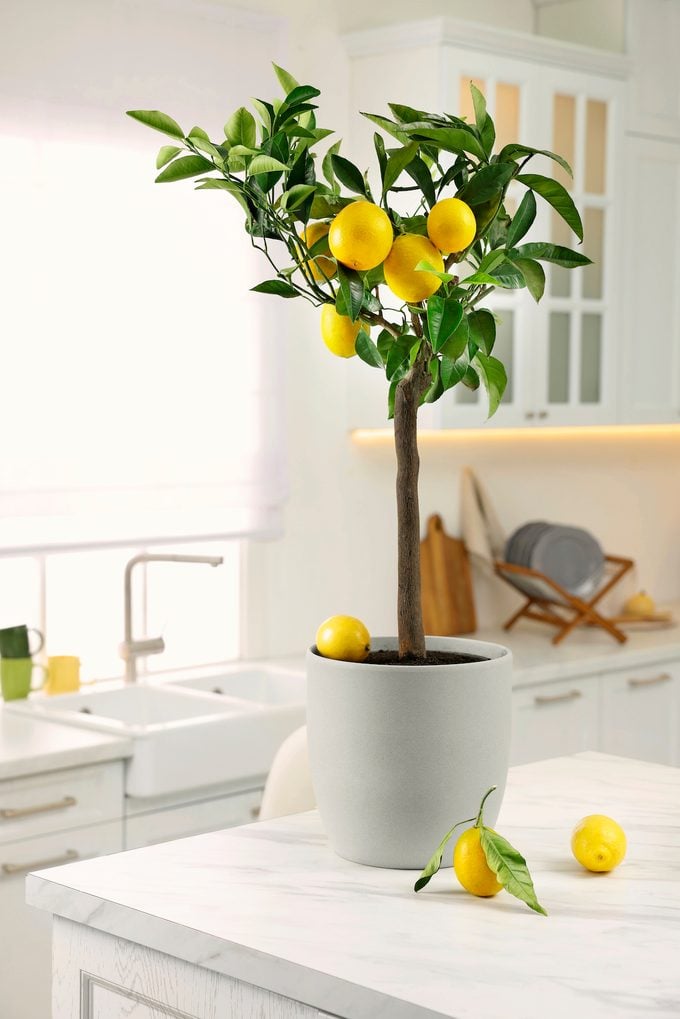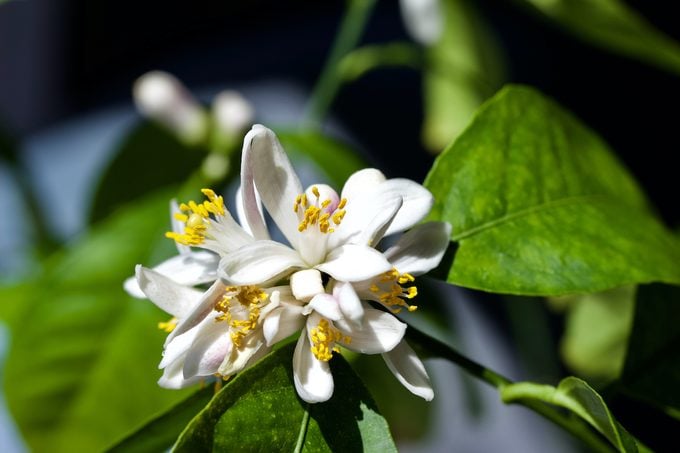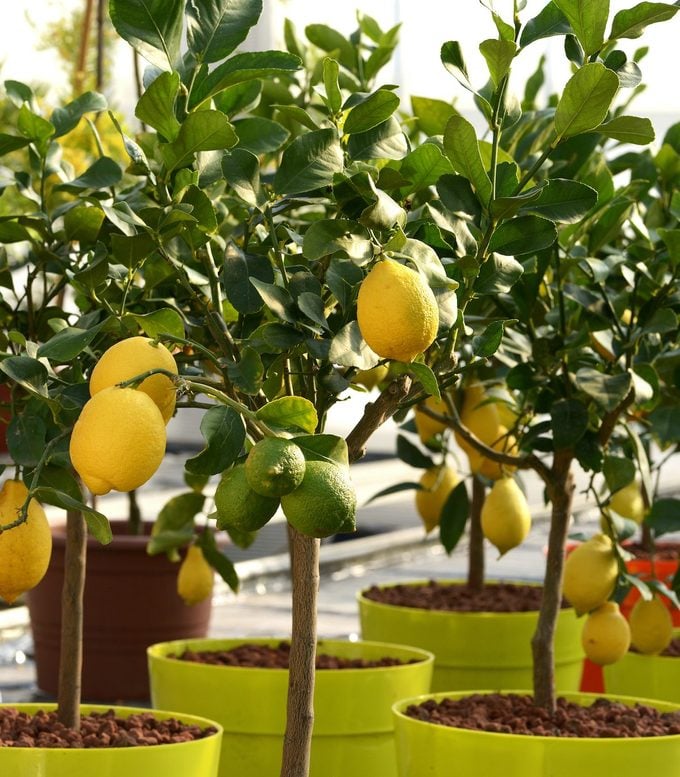How to Grow an Indoor Lemon Tree
Updated: Mar. 04, 2024
It's easier than you think to brighten up your home in winter! Grow a fragrant reminder of summer with an indoor lemon tree.
Can You Grow a Lemon Tree Indoors?

Lemons are among the easiest citrus to grow indoors and the trees make thoughtful gifts. You provide the light, water and fertilizer, and they offer beautiful, fragrant flowers and homegrown lemons. According to Steven Biggs, the author of Grow Figs Where You Think You Can’t, scent is one of the best reasons to grow an indoor lemon tree. “You can’t beat the smell of lemon blossoms—they’re a joy indoors when it’s gray outdoors.”
Here’s everything you need to know about growing fruit trees indoors.
Indoor Lemon Tree Care
Don’t Start With a Seed
Steven points out that while it’s possible to grow a lemon tree from a seed, it takes years to fruit. “If you want fruit sooner, get a plant that’s grafted or a rooted cutting,” he advises. Lemon trees are typically grafted onto a dwarf rootstock, and the result is smaller trees that are easier to grow inside.
Curious about growing more citrus trees inside? Here’s how to grow a clementine tree indoors.
Container Size
A smaller year-old tree fits well in a 9- to 10-inch diameter pot. Larger trees that are 2 to 3 years old need more root room, so choose a 12- to 14-inch diameter container. Pick a pot with drainage holes and use a high-quality potting mix.
Light and Temperature
Lemons love sunshine. Place the tree by a bright window with at least eight hours of full sun, supplementing with a grow light if necessary. Even better is the right combination of bright light and cool temperatures. “My best results with indoor lemons over the winter is when I have them in a cool sunroom or greenhouse,” Steven says. A location with a winter temperature of about 70 degrees is ideal for fruit production.
Water and Fertilizer Needs
Overwatering is the quickest way to kill your lemon tree. “Don’t keep the soil too wet,” says Steven. Aim to maintain even moisture, watering when the soil surface is dry. A moisture meter helps citrus growers keep track of watering needs. Increase the humidity by placing the pot on a saucer filled with pebbles and water or by misting the plant regularly. Feed the tree every few months with a citrus tree fertilizer or all-purpose fertilizer.
Learn more about fertilizing citrus trees.
Grow a Meyer Lemon Tree

Many types of lemons do well when grown indoors, but a Meyer lemon tree is the most popular. Not only does it take well to container culture, but the fruits have a sweeter flavor, are less acidic and have thinner skin than many other varieties.
Meyer Lemon Tree Problems
“My Meyer lemon tree blooms but doesn’t fruit. What can I do?” —Birds & Blooms reader Gary Darstein
Horticultural expert Melinda Myers says bright light, proper fertilization, and consistent moisture and humidity can increase the amount of flowers and fruit of indoor citrus plants. Here are some simple steps to adjust your care to encourage fruit to form:
- Place the plant in a sunny south- or southwest-facing window or supplement lower-light locations with plant lights.
- Apply a slow-release fertilizer (all-purpose or one for acid-loving plants) in spring or a quick-release fertilizer from April through September. Always follow the directions on the label.
- Increase the humidity around the plant with a gravel tray. Place pebbles in a saucer filled with water and set the potted plant on top, above the water.
- Water thoroughly and often enough to keep the soil moist but not wet.
Take Your Lemon Tree Outside in Summer

Give your indoor lemon tree a summer vacation by taking it outdoors after the last spring frost. It makes a great deck or patio plant, providing long-lasting perfume to outdoor living spaces. Move the tree back indoors before the first autumn frost. “Lemons are prone to dropping their leaves when you take them back inside,” says Steven. “Luckily, they will grow back!”
Indoor lemon trees are susceptible to several types of insect pests including scale and spider mites, so keep an eye on the trees. Steven treats his with insecticidal soap and horticultural oil before bringing them indoors in early autumn.
Next, discover how to grow an avocado tree indoors.



















